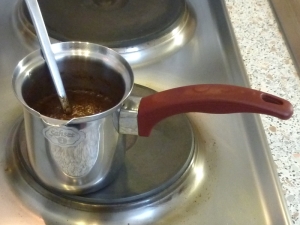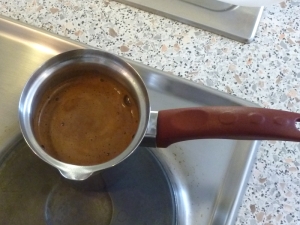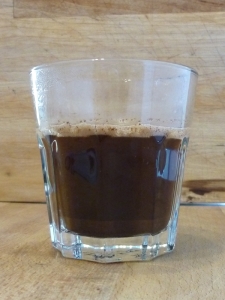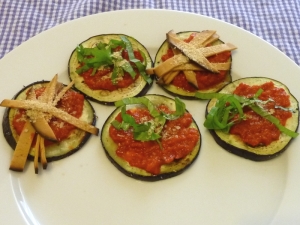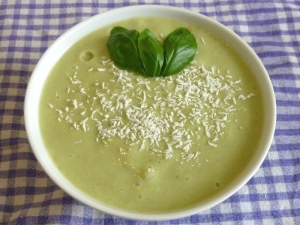Confession: I love coffee and have about two cups per day, but I don’t own any kind of coffee maker and I haven’t been to a coffee shop in ages. What?!
I usually get my coffee fix in the form of instant espresso, which is incredibly convenient and surprisingly delicious. But whenever I feel fancy, I brew a cup or two of Turkish coffee. This special kind of drink is not only available in Turkey, but also in many other countries along the Eastern Mediterranean coast, ranging from Croatia to Egypt.
My husband has been a fan of Turkish coffee for a very long time, and I fell in love with it during our last trip to Croatia and Bosnia two years ago. When we returned from that trip, I immediately jumped into the next Turkish grocery store (thankfully, there are quite a few around here), and bought everything I needed to make Turkish coffee at home, which is just a small boiling pot with a long handle and a can of ground coffee.
The term Turkish coffee refers to the method of preparation, not a special kind of coffee bean. The beans are roasted as usual and then ground to a very fine powder, finer than for any other way of preparation. To make the coffee you simply fill the pot with cold water and heat it on the stove. When the water is hot, but not boiling, stir in the coffee powder and as much sugar as you like. Those coffee pots come in different sizes, mine holds three servings, and you usually need one teaspoon of coffee powder per serving. Bring the mixture to a boil again, but watch out, it might boil over. Don’t stir the coffee at this point, as the foam on top is considered the best part of it. Remove the coffee from the heat and let it cool down a little. You can reheat the pot one or two more times. Be sure that the coffee doesn’t boil too long, because that will result in an unpleasant burnt taste.
Pour the Turkish coffee into small cups, espresso cups or shot glasses will do, and serve immediately. This kind of coffee is not filtered, so you need to wait a little to let the coffee grounds sink to the bottom of the cup or glass. But don’t wait too long, as Turkish coffee is best when it’s really hot.
This drink is traditionally served throughout the day, from before breakfast to after dinner.
I love the mild, smooth taste of Turkish coffee, but I also love that it’s relatively easy to prepare, and you don’t need any fancy, expensive equipment. The #strangebutgood part is the fact that you don’t filter the coffee, so a thick layer of sludgy grounds is left behind at the bottom of the cup.
Have you ever tried Turkish/Greek/Arabian coffee?
See you!


